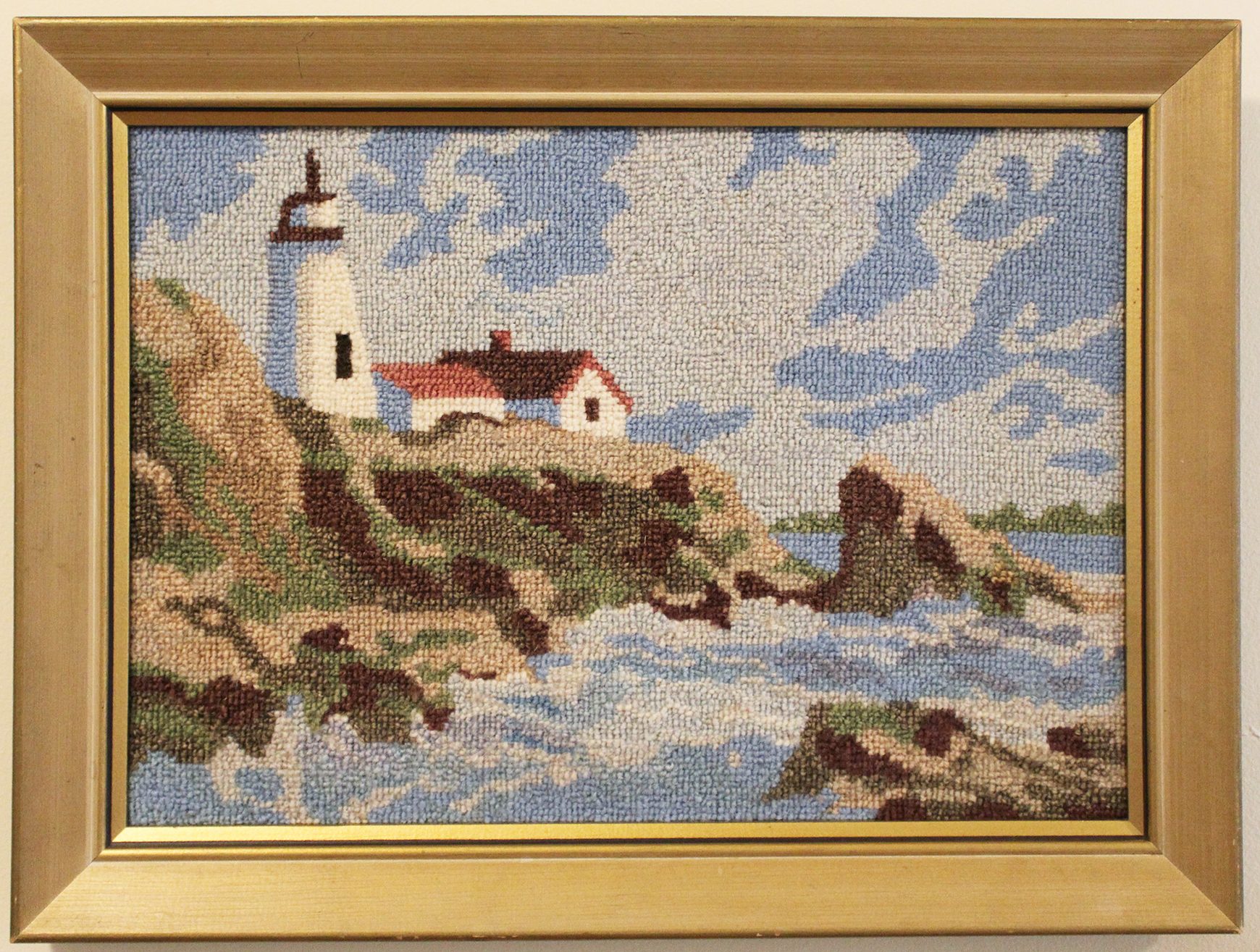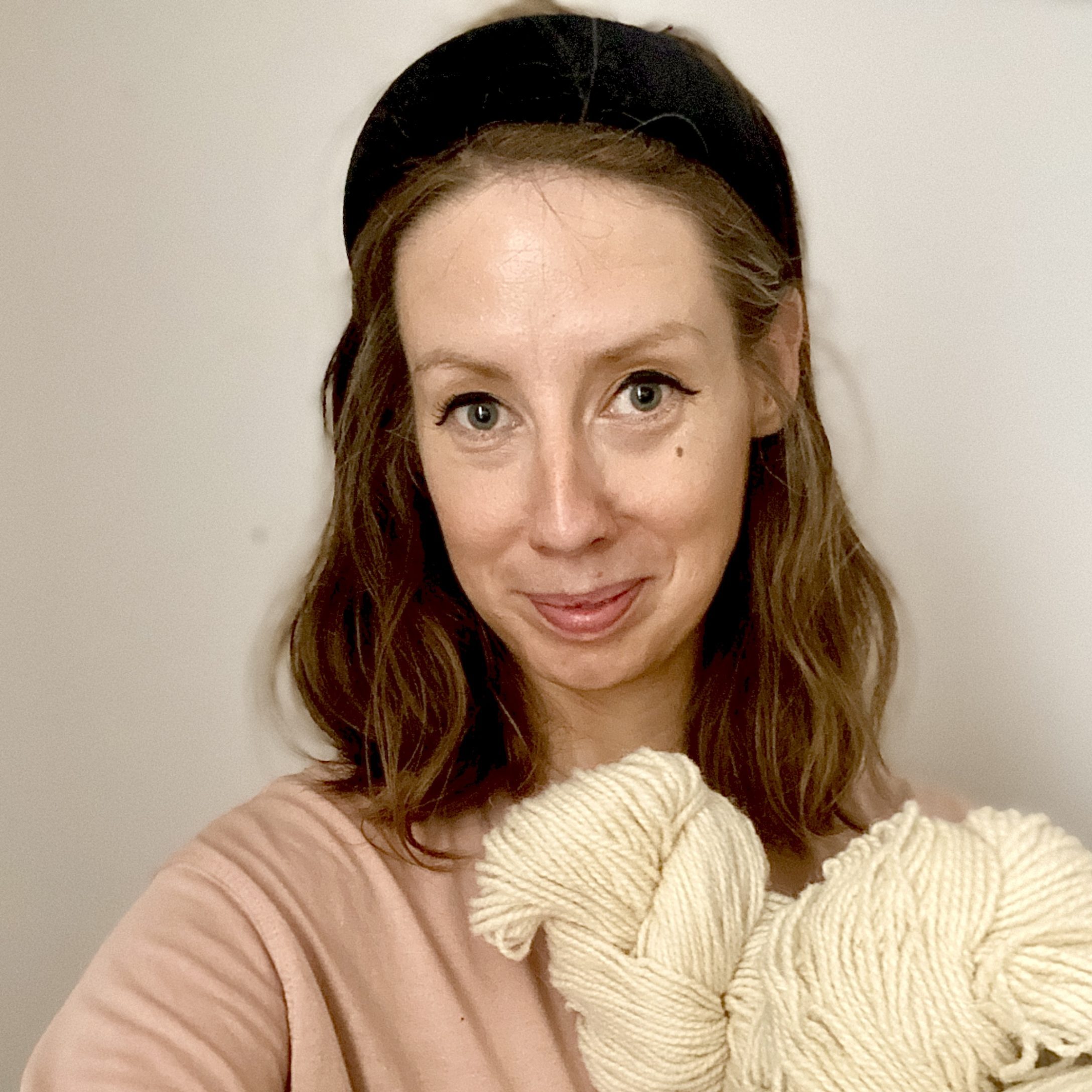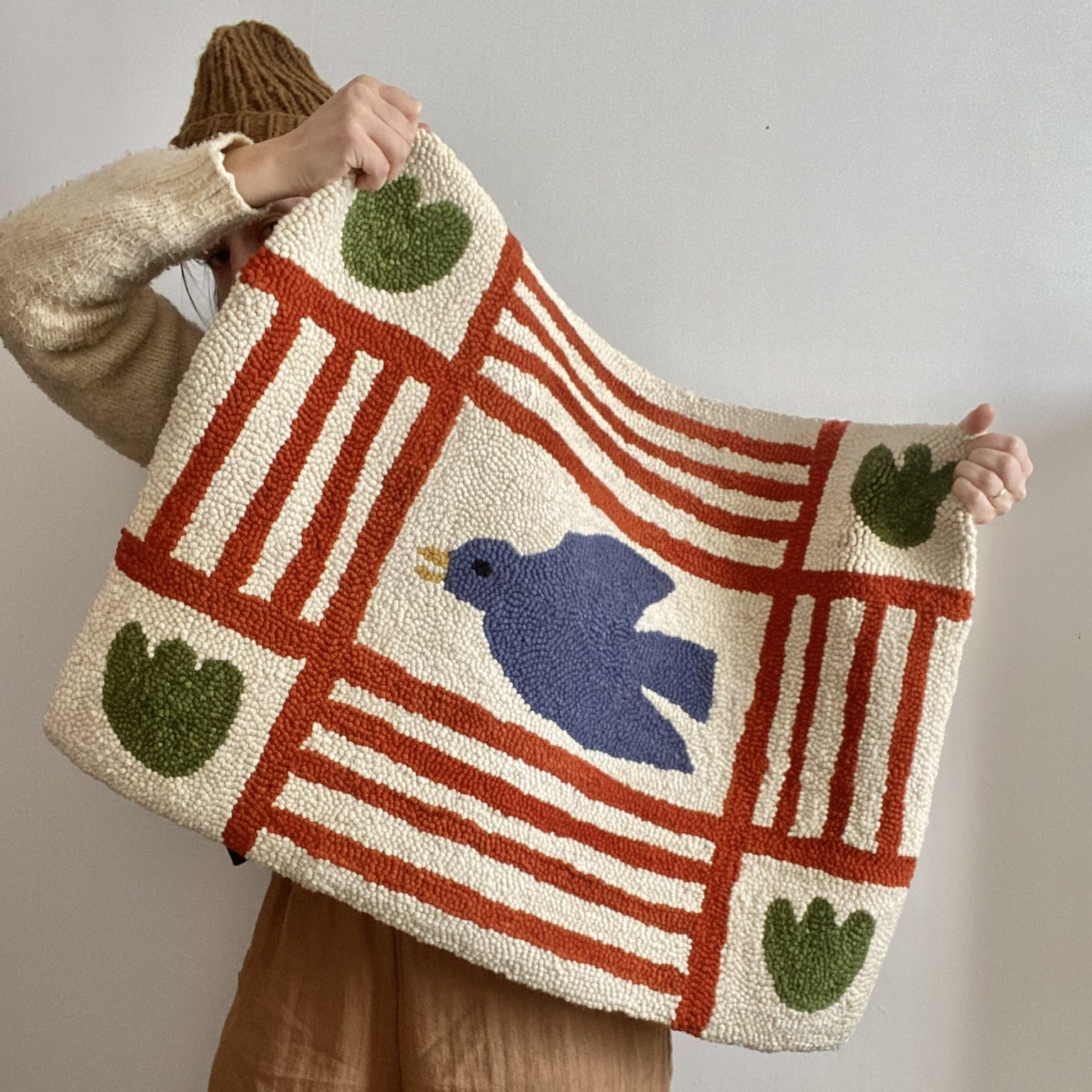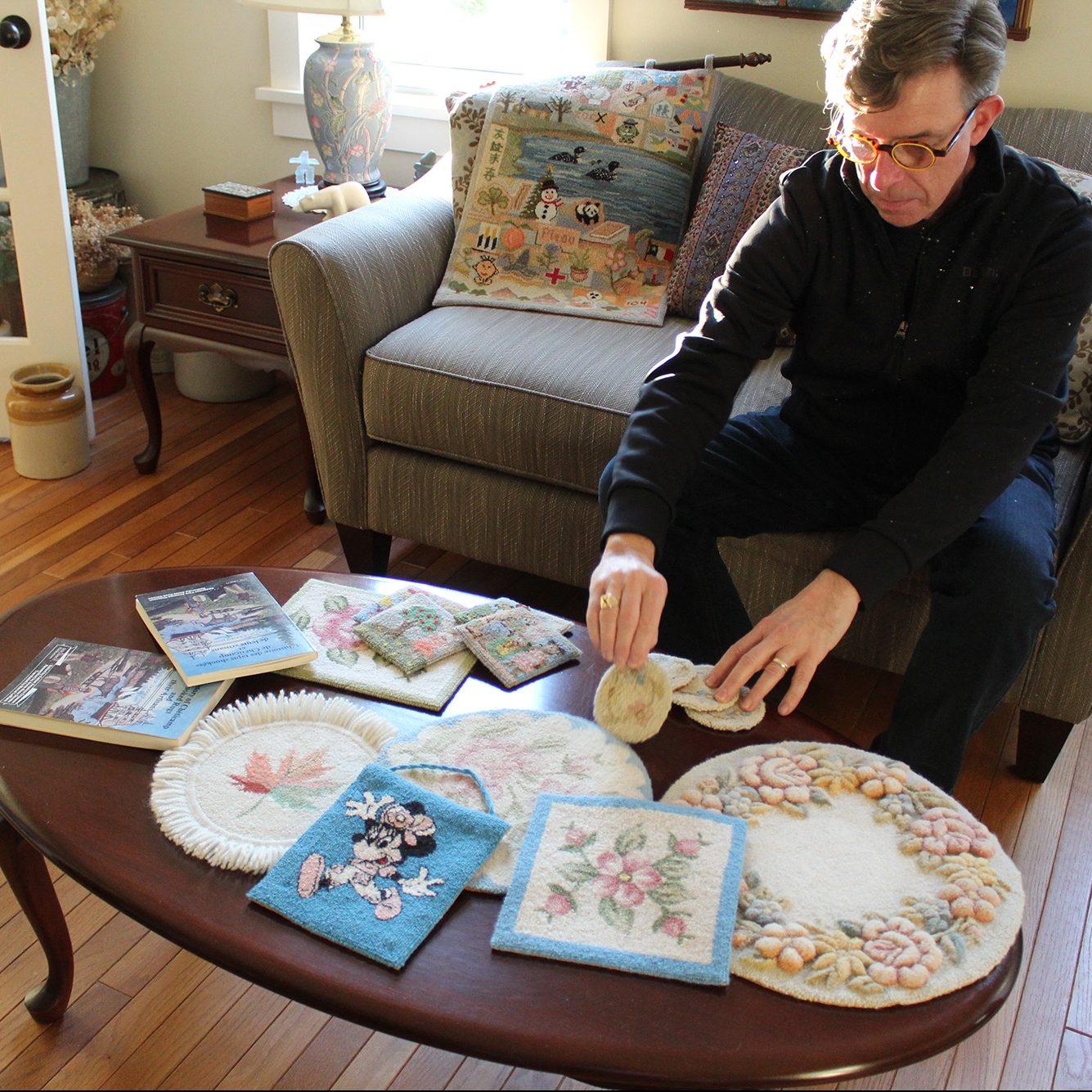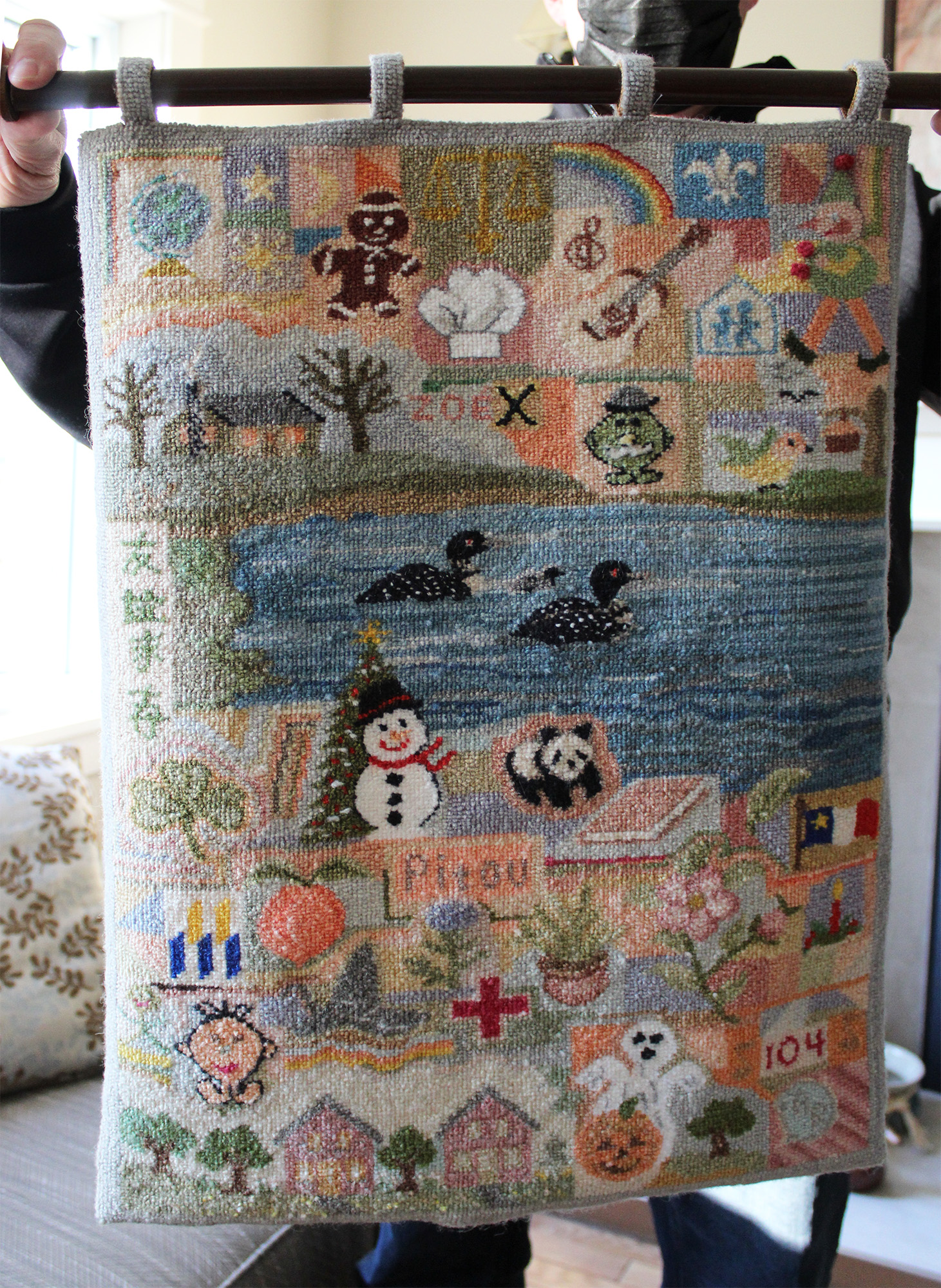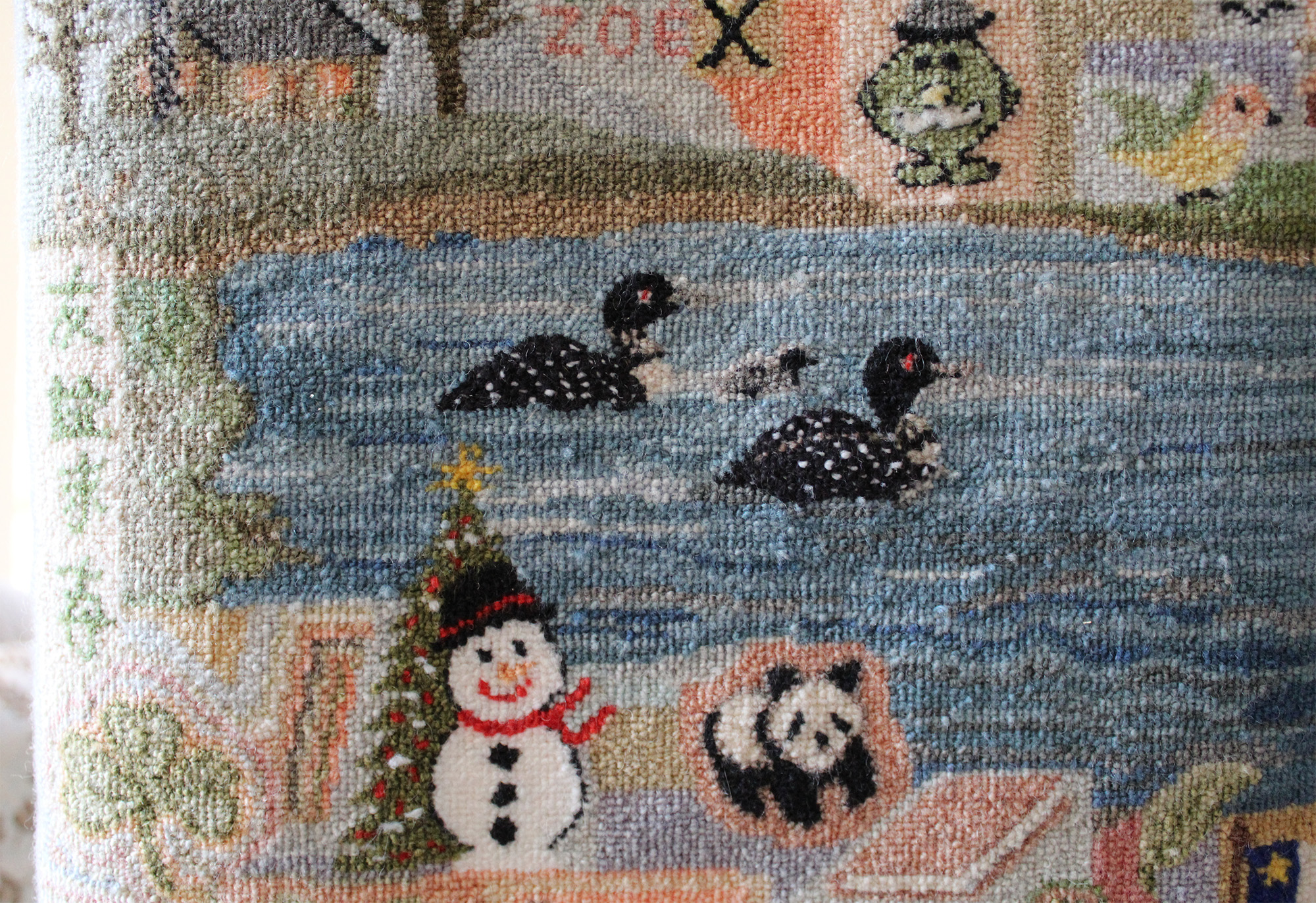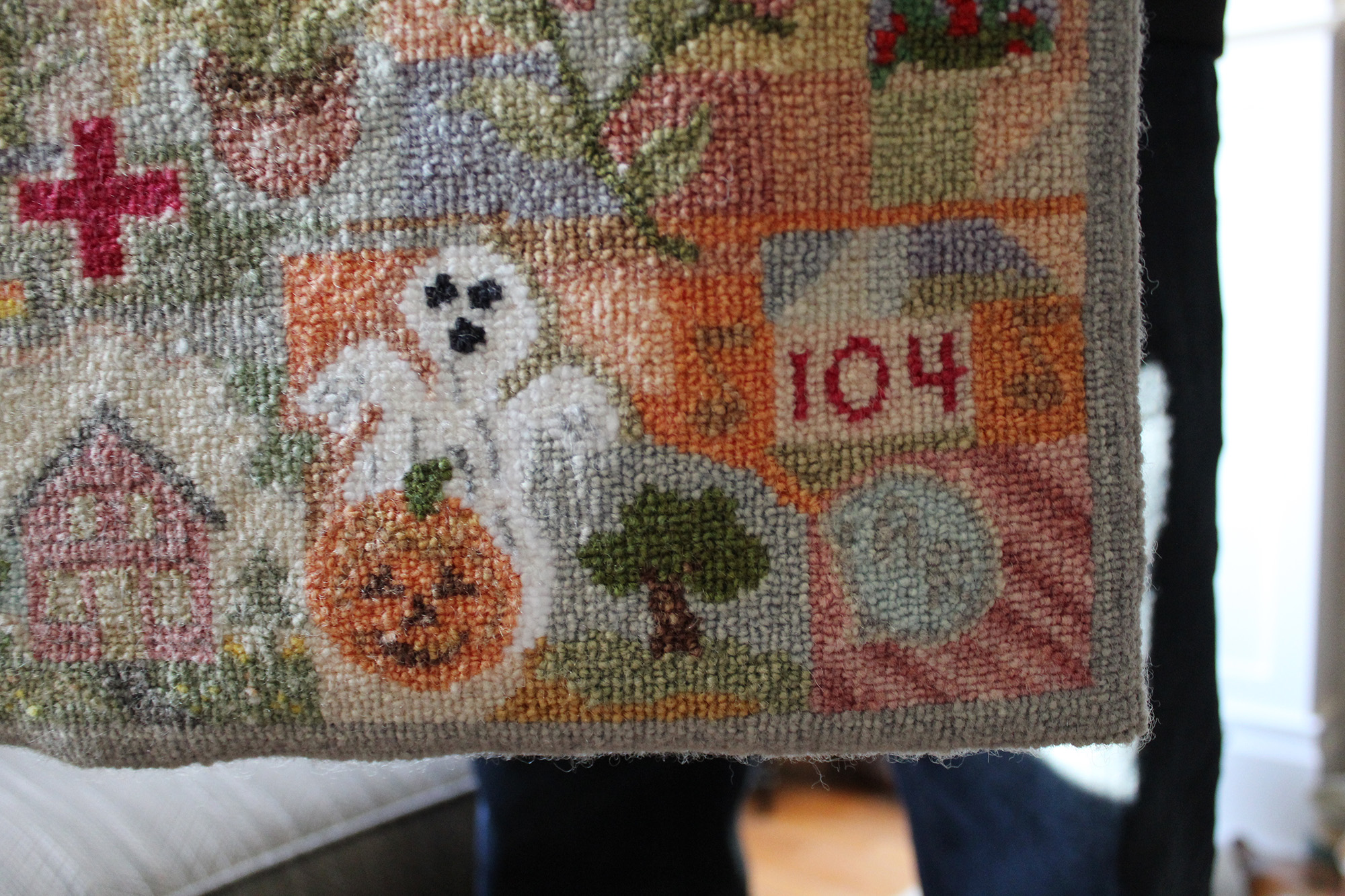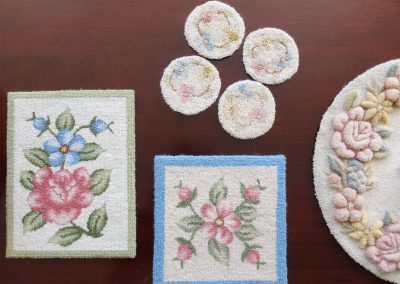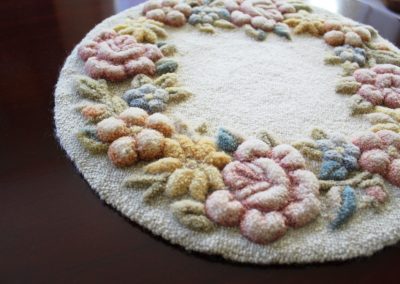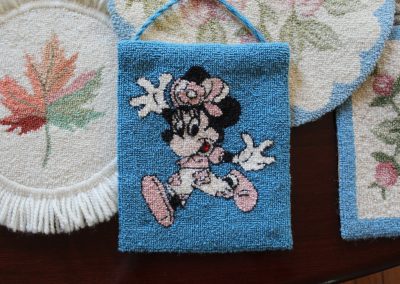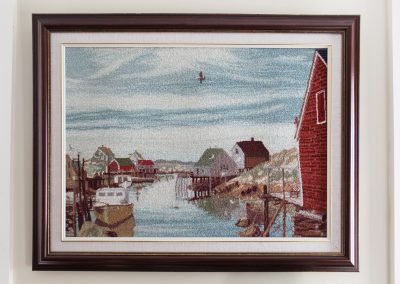Rug Hooking
Gérard and Annie-Rose Deveau were rug-hooking artists and pillars of the rug hooking industry in Chéticamp, Cape Breton during the 1970s, 80s, and 90s.Seaside landscape by Annie-Rose and Gérard Deveau
Crystal Ross, Textile Artist. Image used with permission from the artist.
Bird with Flowers. Crystal Ross, 2022. Image used with permission from the artist.
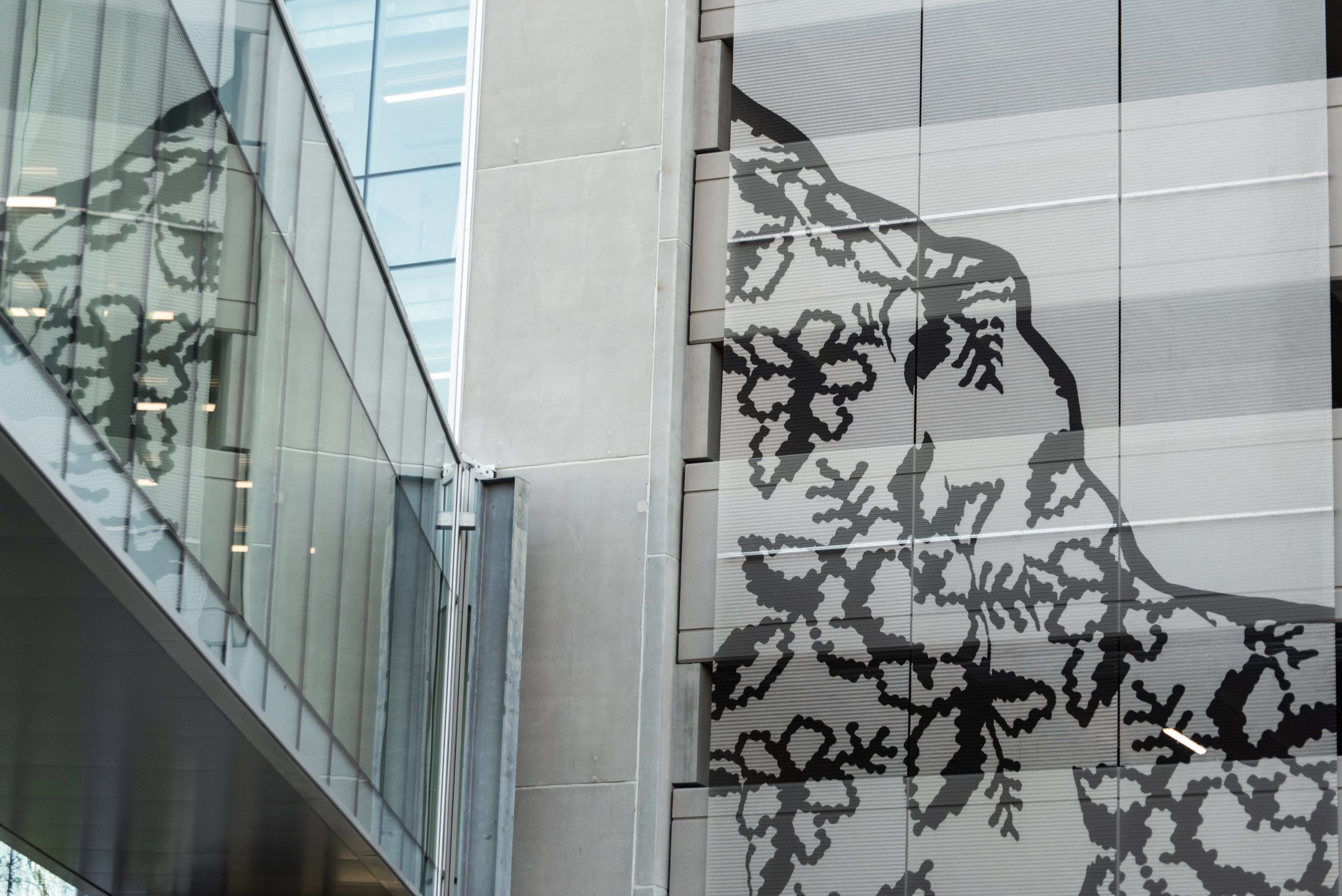
In Conversation, Rug Hooking, Andrea Tsang Jackson
01 Annie-Rose Deveau & Rug Hooking at Chéticamp
02 The Chéticamp style
03 Annie-Rose’s “tapis fous” or “crazy rugs”
Hooked Rugs, Gérard and Annie-Rose Deveau
A selection of hooked rugs by Annie-Rose and Gérard Deveau. The four coasters (top) were hooked by Annie-Rose’s mother, Marie Poirier. They were rendered in a simpler fashion, with a single colour for each flower petal.
Hooked Rug, Annie-Rose Deveau
A floral wreath by Annie-Rose, using many shades of wool and with dimensional relief.
Hooked Rug, Gérard Deveau Rug, 1980s, by Gérard Deveau
A gift made in the 1990s for Gérard’s Disney-obsessed granddaughter, Zoé.
The family of Gérard and Annie-Rose Deveau granted Andrea permission to tell their story in this way.
RESOURCES
ABOUT THE ARTIST
Andrea Tsang Jackson is a Canadian-born visual artist of Chinese descent based in Kjipuktuk / Halifax, Nova Scotia. Her work takes the traditional craft medium of quilting and applies it to a contemporary context.
ACKNOWLEDGEMENTS
This project is possible with the participation of many people who offered their time, knowledge, and collaboration.

